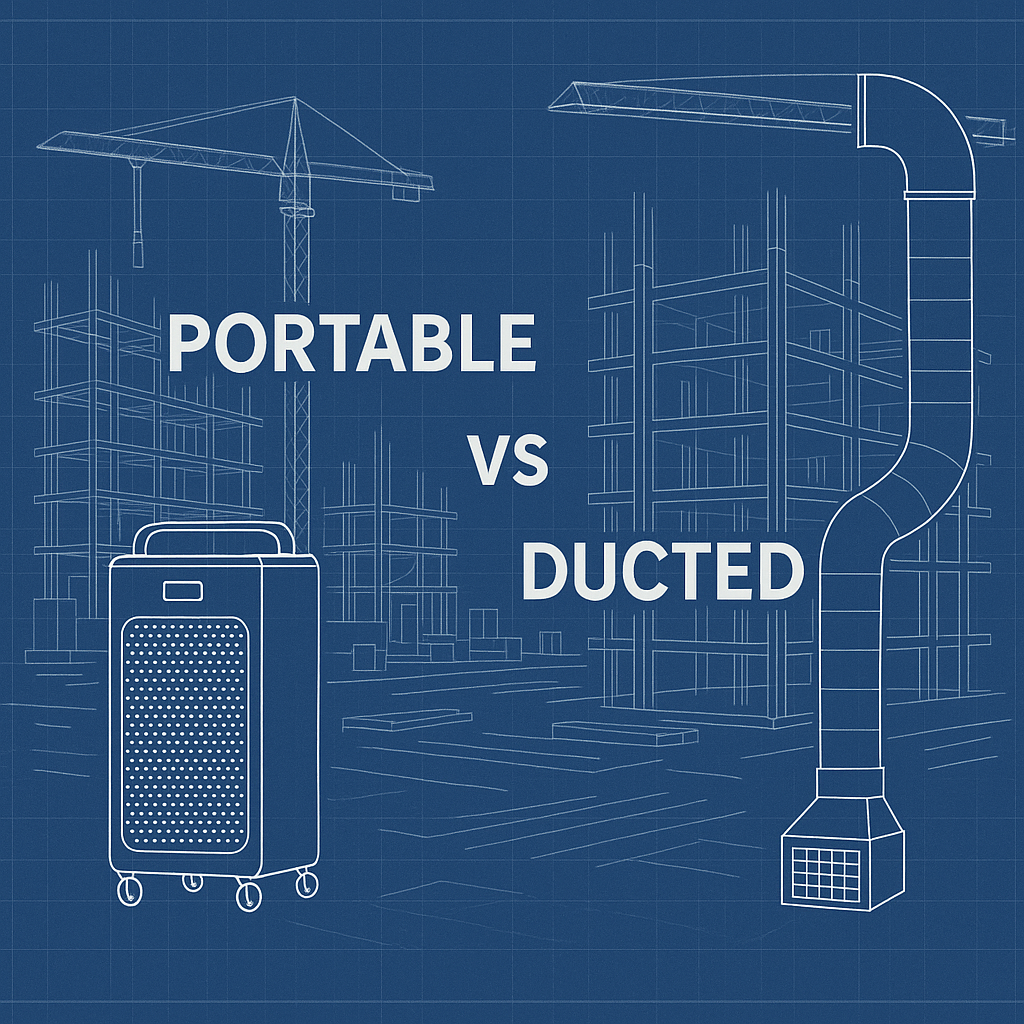
Too much humidity in your home can make it an uncomfortable place to live. Excess moisture in the air means allergy seasons are harder to deal with, it provides a breeding ground for mold, and a humid home means less comfortable living conditions. If high humidity has made your home feel like a swamp and you wake up drenched in sweat, you’re not alone—our dessicant dehumidifier models solve these problems and protect your property.
The dehumidifier most of us are familiar with is the compressor model, but if you’re doing your research, you’ve probably run across desiccant dehumidifiers. If you didn’t have any idea what the difference was, you’re not alone. A desiccant dehumidifier might be a less common choice, but it might also be the right choice for you. Knowing a little more about these machines can help you make the right decision. Our dehumidifier sizing form can help you determine which type is right for your business.
What is a desiccant dehumidifier?
A desiccant dehumidifier uses chemical attraction instead of condensation to remove moisture from the air. The most important piece of machinery in one of these units is the desiccant wheel. The desiccant wheel is a sort of honeycomb network of small airways lined with silica gel -- yes, the same silica gel used to keep packages dry.
Desiccant dehumidifiers for homes are generally smaller and lighter than their compressor counterparts, but they come in virtually any size, from a tiny disposable unit for a tiny space to a trailer-size unit for drying buildings affected by flooding.
How does a desiccant dehumidifier work?
A desiccant dehumidifier uses a silica‑gel wheel to absorb moisture instead of condensing it; because of this, desiccant dehumidifiers can maintain performance in cold or low‑humidity spaces where compressor models struggle. A blower forces air into the unit and through the rotating desiccant wheel. The silica gel absorbs the moisture in the air and releases about 75% of the air back into the space it occupies as dry, processed air. The other 25% of the air is known as “reactivation air”. The unit heats this air to 90 to 140 degrees celsius, and these high temperatures drive the moisture out of the silica gel. This warm, wet reactivation air is then released through ductwork outside the unit and usually, outside the home or office, the unit occupies.
Why get a desiccant dehumidifier?
Desiccant dehumidifiers typically can’t compete with the drying rates of compressors, but they are efficient and can be the best option for some situations. Because desiccant dehumidifiers are generally smaller and lighter than compressors, they are ideal for smaller spaces like kitchens, bathrooms, and closets. These units are also quieter than compressors, so if noise levels are important to you, a desiccant might be your best option. These qualities make desiccant models ideal for tight, enclosed spaces—if you need to protect a basement or crawl space, explore our crawl space dehumidifiers.
If you’re environmentally conscious, it’s worthwhile to note that desiccant dehumidifiers don’t contain the refrigerants that compressors do, and those refrigerants contribute to greenhouse gases. Desiccant dehumidifiers also work better at a greater range of temperatures, particularly in cooler environments. In fact, at lower temperatures, desiccant dehumidifiers are more efficient than compressors. If you’re fighting a battle against humidity in your home or business, a desiccant dehumidifier can be an excellent choice and improve your living conditions. As with any purchase like this, though, it’s important to consider your specific purposes and circumstances.
Still unsure what capacity you need? Use our dehumidifier sizing request form and a specialist will assess your needs and recommend the best model for you. Or Contact us to size your system properly and ensure effective moisture dehumidification for your space.



![4 Ways Indoor Humidity Can Cause Problems For Your Business [2025 UPDATED]](https://blog.purennatural.com/hubfs/a%20factory%20with%20extreme%20humidity%2c%20showing%20condensation%2c%20heavy%20air%2c%20and%20workers%20struggling%20with%20the%20damp%20environment.webp)

